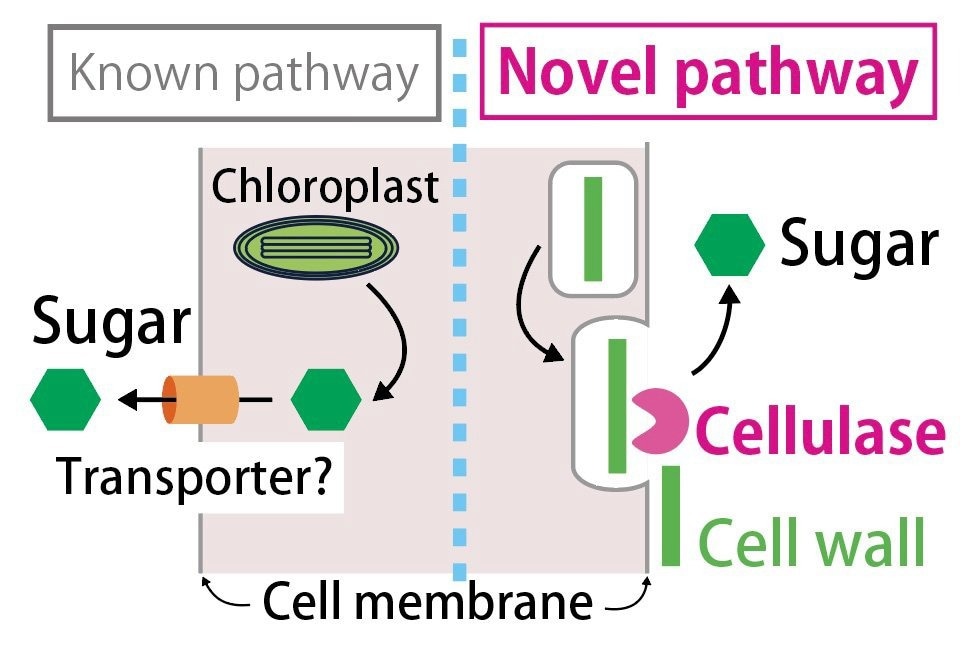Researchers have discovered a new method by which symbiotic algae emit sugar. This process includes the often-ignored cell wall, indicating that this structure is crucial for symbiosis and the movement of carbon in the ocean in addition to protecting the cell.
 A model of the pathways of sugar secretion from coral symbiotic algae. Image Credit: Shinichiro Maruyama
A model of the pathways of sugar secretion from coral symbiotic algae. Image Credit: Shinichiro Maruyama
On August 18th, 2023, the findings were published in the journal eLife.
It is well known that cnidarian organisms like corals, sea anemones, and microalgae have a symbiotic relationship. The coral receives the sugars and other carbohydrates the algae create using sunlight. In exchange, the coral offers the algae food and protection. This partially resolves the Darwin paradox by explaining why productive coral reefs grow in tropical environments deficient in nutrients.
Though delicate and complicated, this symbiotic relationship could be negatively impacted by even the smallest changes in temperature, pollution, or water chemistry, which can cause coral bleaching or have other detrimental consequences on the environment.
Although many of the complex processes at work in this interaction are still not fully understood by scientists, doing so is essential for the survival of coral reefs and the biodiversity they sustain.
We discovered that the release of sugar occurs when the algal cell begins degrading its own cell wall. This breakdown of the cell wall happens even when a symbiotic host is absent and gets enhanced when conditions become more acidic.
Shinichiro Maruyama, Study Lead Author and Associate Professor, Graduate School of Frontier Sciences, University of Tokyo
Symbiosomes, unique compartments within coral cells, or the digestive tracts of marine creatures are home to symbiotic algae. The researchers interpret the sugar release as the algal reaction to environmental changes in nature since these settings are often acidic.
The sugar release is also mediated by the enzyme cellulase, which is renowned for its use in breaking down cell walls in land plants. The quantity of sugar released outside the cell reduces when the alga is treated with a cellulase inhibitor, demonstrating that the breakdown of sugar chains by cellulase is directly connected to the increase in sugar release under acidic circumstances.
Maruyama, “Our findings suggest that the algal-coral interaction is more complex than ever thought, providing an important piece of the jigsaw puzzle when it comes to carbon cycling in marine environments.”
Maruyama and his team’s next stages will involve elucidating the molecular processes underlying sugar release, cell wall preservation, and enzymatic reaction control. They have already started working on a project to reveal the whole range of molecules generated by symbiotic algae, which will help them better understand the ‘molecular language’ that symbionts and hosts use to communicate.
Source:
Journal reference:
Ishii, Y., et al. (2023). Environmental pH signals the release of monosaccharides from cell wall in coral symbiotic alga. eLife. doi.org/10.7554/eLife.80628